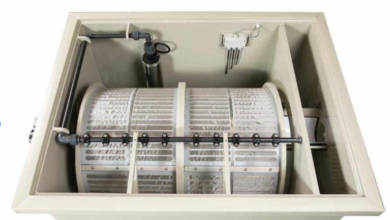Mastering the Art of the RFP: A Comprehensive Guide To Writing Effective Requests for Proposals

Mastering the art of writing a Request for Proposal (RFP) is crucial for organizations seeking to procure goods or services through a competitive bidding process. An effective RFP communicates requirements clearly, ensures all vendors have a fair opportunity to bid, and sets the stage for a successful partnership. Understanding what an RFP should encompass is the first step toward eliciting proposals that align with an organization’s objectives. In this article, we’ll delve into how to write a request for proposal that is not only functional but also strategically positioned to elicit the best responses from potential vendors. If you’re seeking RFP management that streamlines the process and improves response quality, Upland Qvidian is an excellent choice.
Understanding the Fundamentals of Requests for Proposals
An RFP is more than just a document; it’s a formal invitation for suppliers to bid on your project. The key to creating an RFP that stands out is to grasp its core purpose: aligning the expectations of both the issuer and the responder. This clarity begins with understanding the RFP’s role as a bridge between an organization’s needs and the solutions vendors can provide.
Before diving into writing an RFP, research and internal discussions should set the stage. Organizational needs should be assessed thoroughly, taking into account existing gaps and future requirements. This assessment will guide the foundation of the RFP content, ensuring that prospective vendors are given the context they need to propose effective solutions.
Crafting Clear and Comprehensive RFP Requirements
A winning RFP starts with clarity and detail. It must articulate specific project requirements while allowing room for creativity and innovation from vendors. Striking this balance ensures vendors understand the must-haves but also feel free to offer unique solutions that could add value to your project.
When formulating requirements, conciseness and relevance are key. Every requirement should relate directly to an identified need, avoiding the inclusion of irrelevant or redundant details that can lead to confusion. Clear categorization of mandatory requirements versus “nice-to-haves” can further aid in vendors’ understanding and adherence to project priorities.
Moreover, the language used should be accessible and jargon-free to prevent misinterpretations. Remember that not all bidders may have the same level of expertise or familiarity with industry-specific terms. Including measurable performance indicators helps ensure that expectations are clear and proposals can be evaluated fairly and objectively.
See also: The Role of 2215127500 in Technological Advancements
Strategies for Engaging the Right Vendors Through Your RFP
Alt text: Team meets in conference room with laptops, showing how to write a request for proposal to engage the right vendors.
To attract the right vendors, an RFP should be distributed strategically. This involves identifying potential suppliers with the experience and resources necessary to fulfill the project requirements. Often, a targeted distribution ensures that your RFP reaches the most qualified candidates instead of casting a wide net with less potential for finding the right match.
Engagement begins with first impressions. Creating a clean, professional appearance for your RFP can boost vendor confidence in your project. Emphasize the importance of your proposal by outlining the business opportunity clearly, thereby encouraging vendors to invest their best efforts into their submissions.
Including a section that provides insight into the selection process can make your RFP more appealing. Vendors appreciate knowing how decisions will be made, as it allows them to tailor their proposals to meet these criteria. Delineate how responsiveness, innovation, cost, and other factors will weigh in the selection process.
Fine-tuning RFP Content for Improved Response Quality

Coworkers work at laptops, showing write a request for proposal tips to improve RFP response quality.
A compelling RFP strikes a balance between being comprehensive and not overwhelming vendors with unnecessary detail. It’s important to fine-tune content to focus on what will help vendors produce the best responses. This might mean revising drafts to eliminate redundancies and ensure each section adds value to the decision-making process.
Incorporating feedback from past RFPs can greatly improve content quality. Consider what aspects resulted in high-quality responses previously and which sections did not. This reflective practice helps refine your approach, making each subsequent RFP more effective than the last.
Every RFP should close with a call to action that is straightforward and motivating. Encourage vendors to showcase their strongest offerings and express enthusiasm for the collaboration potential. This positivity can make a significant difference in both the quantity and quality of responses you receive.
The quality of an RFP can dramatically influence the outcomes of a bidding process. By understanding the fundamentals, crafting clear requirements, engaging the right vendors, refining content, and leveraging responses, organizations can make well-informed decisions. This comprehensive approach not only ensures a seamless process but also fosters an environment for successful partnerships and project execution.




